Localization, proteomics, and metabolite profiling reveal a putative vesicular transporter for UDP-glucose
- PMID: 34269178
- PMCID: PMC8373376
- DOI: 10.7554/eLife.65417
Localization, proteomics, and metabolite profiling reveal a putative vesicular transporter for UDP-glucose
Abstract
Vesicular neurotransmitter transporters (VNTs) mediate the selective uptake and enrichment of small-molecule neurotransmitters into synaptic vesicles (SVs) and are therefore a major determinant of the synaptic output of specific neurons. To identify novel VNTs expressed on SVs (thus identifying new neurotransmitters and/or neuromodulators), we conducted localization profiling of 361 solute carrier (SLC) transporters tagging with a fluorescent protein in neurons, which revealed 40 possible candidates through comparison with a known SV marker. We parallelly performed proteomics analysis of immunoisolated SVs and identified seven transporters in overlap. Ultrastructural analysis further supported that one of the transporters, SLC35D3, localized to SVs. Finally, by combining metabolite profiling with a radiolabeled substrate transport assay, we identified UDP-glucose as the principal substrate for SLC35D3. These results provide new insights into the functional role of SLC transporters in neurotransmission and improve our understanding of the molecular diversity of chemical transmitters.
Keywords: UDP-glucose; human; mouse; neuroscience; neurotransmitters; solute carrier; synaptic vesicles; transporter.
© 2021, Qian et al.
Conflict of interest statement
CQ, ZW, RS, HY, JZ, YR, YL No competing interests declared
Figures
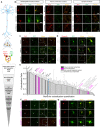
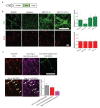
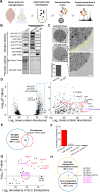
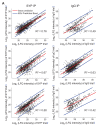

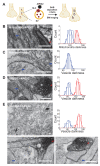
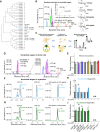

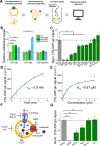



Similar articles
-
Unique pH dynamics in GABAergic synaptic vesicles illuminates the mechanism and kinetics of GABA loading.Proc Natl Acad Sci U S A. 2016 Sep 20;113(38):10702-7. doi: 10.1073/pnas.1604527113. Epub 2016 Sep 6. Proc Natl Acad Sci U S A. 2016. PMID: 27601664 Free PMC article.
-
Vesicular neurotransmitter transporters as targets for endogenous and exogenous toxic substances.Annu Rev Pharmacol Toxicol. 2008;48:277-301. doi: 10.1146/annurev.pharmtox.46.120604.141146. Annu Rev Pharmacol Toxicol. 2008. PMID: 17883368 Review.
-
Vesicular neurotransmitter transporters. Potential sites for the regulation of synaptic function.Mol Neurobiol. 1997 Oct;15(2):165-91. doi: 10.1007/BF02740633. Mol Neurobiol. 1997. PMID: 9396009 Review.
-
Protons Regulate Vesicular Glutamate Transporters through an Allosteric Mechanism.Neuron. 2016 May 18;90(4):768-80. doi: 10.1016/j.neuron.2016.03.026. Epub 2016 Apr 28. Neuron. 2016. PMID: 27133463 Free PMC article.
-
Intersectin associates with synapsin and regulates its nanoscale localization and function.Proc Natl Acad Sci U S A. 2017 Nov 7;114(45):12057-12062. doi: 10.1073/pnas.1715341114. Epub 2017 Oct 23. Proc Natl Acad Sci U S A. 2017. PMID: 29078407 Free PMC article.
Cited by
-
Transcriptional and chromatin accessibility landscapes of hematopoiesis in a mouse model of breast cancer.J Immunol. 2025 Jun 1;214(6):1384-1397. doi: 10.1093/jimmun/vkaf026. J Immunol. 2025. PMID: 40152115
-
Alicyclic Ring Size Variation of 4-Phenyl-2-naphthoic Acid Derivatives as P2Y14 Receptor Antagonists.J Med Chem. 2023 Jul 13;66(13):9076-9094. doi: 10.1021/acs.jmedchem.3c00664. Epub 2023 Jun 29. J Med Chem. 2023. PMID: 37382926 Free PMC article.
-
Residence of the Nucleotide Sugar Transporter Family Members SLC35F1 and SLC35F6 in the Endosomal/Lysosomal Pathway.Int J Mol Sci. 2024 Jun 18;25(12):6718. doi: 10.3390/ijms25126718. Int J Mol Sci. 2024. PMID: 38928424 Free PMC article.
-
Spatial proteomics of vesicular trafficking: coupling mass spectrometry and imaging approaches in membrane biology.Plant Biotechnol J. 2023 Feb;21(2):250-269. doi: 10.1111/pbi.13929. Epub 2022 Nov 4. Plant Biotechnol J. 2023. PMID: 36204821 Free PMC article. Review.
-
New paradigms in purinergic receptor ligand discovery.Neuropharmacology. 2023 Jun 1;230:109503. doi: 10.1016/j.neuropharm.2023.109503. Epub 2023 Mar 13. Neuropharmacology. 2023. PMID: 36921890 Free PMC article. Review.
References
Publication types
MeSH terms
Substances
LinkOut - more resources
Full Text Sources
Molecular Biology Databases

